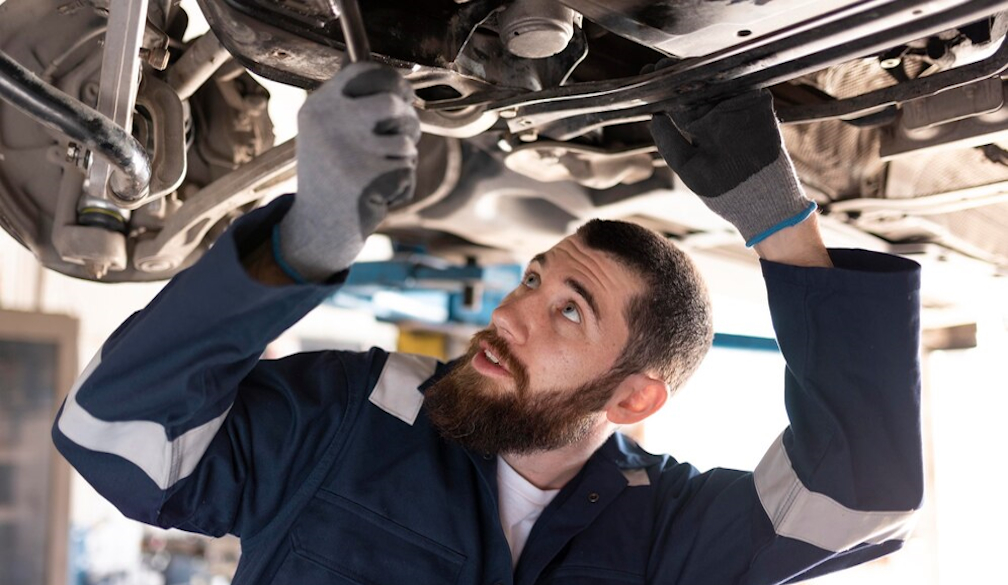How Car Suspension Systems Work: The Mechanics Behind a Smooth Ride

When it comes to enjoying a smooth ride, whether you’re navigating through bustling city streets or cruising along a country lane, the unsung hero of your vehicle’s comfort and control is undoubtedly the suspension system. This intricate network of components not only ensures a smoother journey but also plays a pivotal role in the safety and handling of your car. Let’s delve into the mechanics behind this vital automotive system.
The Role of the Suspension System
The primary purpose of a car suspension system is to maximise the friction between the tyres and the road surface, providing steering stability and good handling, while also ensuring comfort for the passengers. To understand how this is achieved, we need to explore the components that make up the suspension system.
Key Components of the Suspension System
- Springs: Traditional suspension systems use coil springs to absorb the shocks of the road. When a car wheel encounters a bump, the spring compresses to absorb the impact, then releases the stored energy gradually, allowing for a gentle ride.
- Shock Absorbers (Dampers): Shock absorbers complement the springs by controlling the movement of the suspension. They prevent excessive rebounding and bouncing after a spring compresses and decompresses, helping to stabilise the car quickly.
- Struts: A strut is a structural part of the suspension system mounted to the chassis of the vehicle, integrating a shock absorber and a spring in a single unit. Struts provide support to the vehicle’s suspension, spring, and hold the tyre in an aligned position.
- Anti-roll Bars (Sway Bars): These bars link the wheels on opposite sides of the vehicle, reducing the total body roll or sway during sharp turns or over large bumps, thus enhancing the grip and stability.
How Suspension Systems Enhance Driving Experience
The interaction between these components creates a dynamic system that adapts to road conditions and driving styles. For instance, on uneven surfaces, the suspension system allows for the wheels to move up and down with minimal movement of the vehicle cabin, reducing the amount of jolt felt by passengers.
Moreover, a well-tuned suspension system aids in maintaining vehicle balance; this balance is crucial not only for comfort but also for safe braking and steering. Effective shock absorbers and struts help keep the car level with the road, providing better handling and preventing skidding or sideways movement.
The Evolution of Suspension Systems
Over the years, suspension technology has evolved from simple leaf springs to complex multi-link systems designed for precision and performance. Today, advanced systems like air suspension offer adjustable settings for varying levels of firmness and ride height, controlled by onboard computers to suit different driving conditions.
Maintaining Your Suspension System
To ensure your suspension system remains in top condition, regular checks and maintenance are essential. This includes inspecting the shocks and struts for signs of wear, checking the tightness of all bolts and nuts, and replacing any worn parts. Keeping up with your vehicle’s maintenance not only prolongs the life of your suspension components but also enhances your driving experience.
If you’re managing a fleet of vehicles, regular servicing, including suspension checks, is critical for maintaining performance. On-site fleet servicing makes it easy to keep your vehicles in top shape without disrupting business operations.
For those who take pride in their vehicle’s performance and upkeep, visiting a specialist like Termine Prestige Motors can ensure that your car remains in peak condition, ready to handle any road with ease.
Understanding the mechanics behind your car’s suspension system illuminates just how crucial this component is to your overall driving experience
Whether it’s providing comfort on rough terrain or ensuring your vehicle responds swiftly and safely under challenging conditions, the suspension system holds the key to a smooth and safe ride. So next time you’re out for a drive, remember, there’s a lot going on beneath you, working tirelessly to ensure you and your passengers enjoy the journey, wherever the road may lead.







